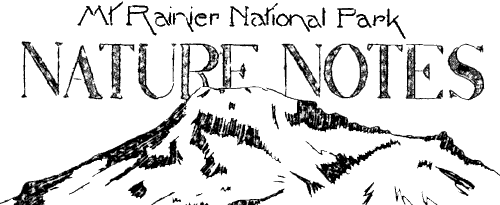
 | ||||||||
Of waders we find the Great Blue Heron in the Park and a description of the bird would mention its size and apparent ugliness; but in speaking of its colors we would naturally use the words "streaked" or "striped" in picturing the pattern of black and white on the under parts. The upper parts are slaty black. The reeds and marsh grasses given the "streaked" or "striped" background, and, since the bird is most active at twilight, its bluish shades blend more nearly with this background than when the more brilliant colors of day predominate. Of ground dwelling birds the classic example of protective coloration
wherever found is the Ptarmigan. This is a bird of the Arctic regions,
although occurring southward on mountain ranges where altitude renders
the environment favorable.
While the Ptarmigan serves as an excellent example of a large, dull colored ground bird, we find that brilliantly colored birds are found, almost without exception, off the ground. If they are on the ground, as is the Western Meadowlark, the colors are on the lower surfaces concealed from enemies above. While we might at first be led to believe that the bright blue of the Bluebird or the orang, yellow and red of the Western Tanager with colors which should certainly render the birds wearing them conspicuous beyond any possible chance of concealment, there may be some reason to question this. Does not the amateur artist, whether in oils or in coloring photographs, produce a "flat" effect when painting a forest scene? Lacking the power to observe which training develops, he misses he colors which are usually present and which give life to the scene. Based upon reason alone it follows that since a leaf is (or appears) green, and therefore a tree is green, and also the forest. But what a multitude of colors may actually be found, resulting from lights, shadows, reflections, dead or dying vegetation, and countless other factors. Then, too, how more varied and brilliant these colors are when viewed with the light from above. To us, from our station on the ground, the individual bird which we have succeeded in detaching from his surroundings may appear flamboyantly colored. How many do we fail to observe because they blend into a background of color? and to what extent are they protected from their enemies for this same reason? (This concludes the article on Protective Coloration
of Birds of Mount Rainier National Park by Ranger Naturalist,
| ||||||
| <<< Previous | > Cover < | Next >>> |
vol10-8d.htm
17-Nov-2001